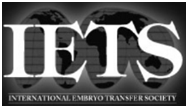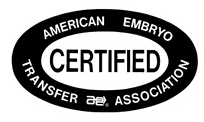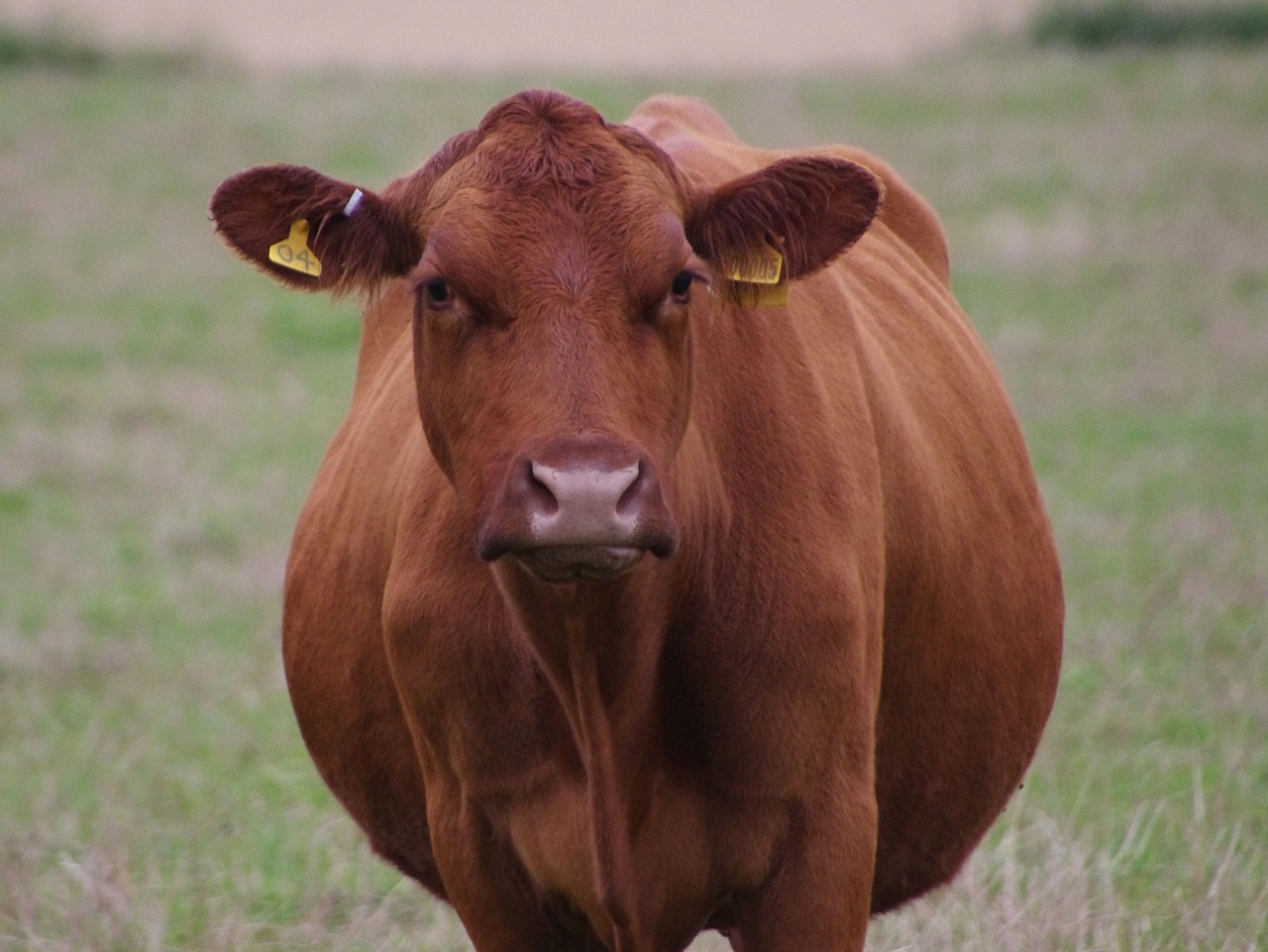Embryo Transfer
What it is:
• Collection, placement and freezing of cattle embryos including placement of IVF embryos, with consultation and assistance in super-ovulating donor cattle and setting up recipients
Key Benefits:
• Quickly propagate quality genetics in your herd
• Shorten genetic progress intervals by flushing 7 month old heifers
• Freezing embryos allows sale and shipment of quality genetics
• Dr. Comyn is AETA certified and certified to ship to the European Union
How does it work?
• Donor cattle – cattle of superior show and/or genetic merit, and monetary value
• Recipient cattle – brood cows who receive the embryo and act as a surrogate
• Embryo – fertilized ovum that has the potential to create a pregnancy
• Super ovulation – the process in which a donor cow receives extra levels of a naturally produced hormone (FSH – follicle stimulating hormone) to increase the number of ova produced
• IVF – In vitro fertilization – these ova are collected from the cow, fertilized in an incubator and then placed in recipients, We do not perform this type of collection but do place IVF embryos
• In vivo – the donor cow is naturally mated or artificially inseminated and the fertilized ova (embryos) are collected 7 days post-mating, Dr. Comyn does this procedure very successfully
• Staging/Grading – the embryos are examined under a microscope and given both a staging (how mature the embryo is) and quality (how good it is) code
• Freezing – A step-down process, by which the embryos are gradually cooled to allow cryopreservation
• Storage – Once frozen and packaged embryos need to be stored and transported in liquid nitrogen, we offer storage at the tanks located in our office.


Do you have a really good cow and you want more offspring than what nature provides? Embryo transfer is the primary method of increasing the number of calves from this cow. I usually figure 4 to 5 viable embryos per flush with a range of 0 to 50 or more. I can place the embryos in recipients at the time of flush or freeze them for placement at a later date.
I will flush a cow as often as every 26 days and will start on a heifer (depending on size and maturity) as young as 7 months of age.
How is Embryo Transfer done?
Embryo production in the donor dam is facilitated by the use of progesterone implants and follicle stimulating hormone (FSH). The cow comes in heat at the end of the FSH injection protocol at which point she is bred naturally or artificially. The embryos are harvested seven days later via uterine lavage.
The recovered embryos are either implanted in recipient cows that are seven days post estrus or frozen for implantation at a later date.
The expected embryo production of a cow is about 5 viable per flush with a range of zero to sixty or eighty. In general a cow that produces well will continue to produce well; a poor producer will remain a poor producer but one never knows unless one tries. I feel three or four flushes are necessary before a cow can be called a poor producer. The pregnancy rate for transferred embryos is about 55-65% for grade one and two embryos.
The pregnancy rate for ET will mirror or slightly excede AI in a given herd. The ability of the heat detector, facilities available, the nutritional level of the recipients, the health management of the recipients and attitude of the recipients all play into pregnancy rate.
AETA Certification
Dr. Comyn is a member of the American Embryo Transfer Association (AETA) and International Embryo Transfer Society. Dr Comyn is AETA certified.
AETA Certification is an important statement of quality control.
To become AETA Certified, a veterinarian must submit to AETA flush records to prove experience and demonstrate necessary equipment, equipment maintenance; pass a written exam and log at least 12 hours of continuing education in AETA approved meetings per year. Embryos recovered, processed and transferred by an AETA certified Practitioner will yield less variable results due to the experience the AETA certified doctor must have in embryo transfer. Practitioner AETA Certification is necessary for embryos to be exported to Japan, Canada, the EU and South American countries.
Dr. Comyn is also certified for EU export which is an additional step from AETA certification. The EU certification requires biannual USDA inspections of the flush facility.
Virginia Herd Health Management Service PCis an AETA certified ET Company and approved to export embryos to Europe.
IETS number 1592
European Union approved embryo transfer business company number 06VA126
I will travel to collect cows.Do you have a really good cow and you want more offspring than what nature provides? Embryo transfer is the primary method of increasing the number of calves from this cow. I usually figure 4 to 5 viable embryos per flush with a range of 0 to 50 or more. I can place the embryos in recipients at the time of flush or freeze them for placement at a later date.
I will flush a cow as often as every 26 days and will start on a heifer (depending on size and maturity) as young as 7 months of age.
How is Embryo Transfer done?
Embryo production in the donor dam is facilitated by the use of progesterone implants and follicle stimulating hormone (FSH). The cow comes in heat at the end of the FSH injection protocol at which point she is bred naturally or artificially. The embryos are harvested seven days later via uterine lavage.
The recovered embryos are either implanted in recipient cows that are seven days post estrus or frozen for implantation at a later date.
The expected embryo production of a cow is about 5 viable per flush with a range of zero to sixty or eighty. In general a cow that produces well will continue to produce well; a poor producer will remain a poor producer but one never knows unless one tries. I feel three or four flushes are necessary before a cow can be called a poor producer. The pregnancy rate for transferred embryos is about 55-65% for grade one and two embryos.
The pregnancy rate for ET will mirror or slightly excede AI in a given herd. The ability of the heat detector, facilities available, the nutritional level of the recipients, the health management of the recipients and attitude of the recipients all play into pregnancy rate.
AETA Certification
Dr. Comyn is a member of the American Embryo Transfer Association (AETA) and International Embryo Transfer Society. Dr Comyn is AETA certified.
AETA Certification is an important statement of quality control.
To become AETA Certified, a veterinarian must submit to AETA flush records to prove experience and demonstrate necessary equipment, equipment maintenance; pass a written exam and log at least 12 hours of continuing education in AETA approved meetings per year. Embryos recovered, processed and transferred by an AETA certified Practitioner will yield less variable results due to the experience the AETA certified doctor must have in embryo transfer. Practitioner AETA Certification is necessary for embryos to be exported to Japan, Canada, the EU and South American countries.
Dr. Comyn is also certified for EU export which is an additional step from AETA certification. The EU certification requires biannual USDA inspections of the flush facility.
Virginia Herd Health Management Service PCis an AETA certified ET Company and approved to export embryos to Europe.
IETS number 1592
European Union approved embryo transfer business company number 06VA126
I will travel to collect cows.

I am set up to transfer and freeze IVF embryos. I have my portable lab, incubator etc. Initial pregnancy rates with good quality fresh IVF embryos are pretty comparable to traditional ET rates (50 – 60 % preg @ 45 days pregnancy).
IVF is a relatively new technology in bovine reproduction. In short, eggs (ova) are drawn (aspirated) off the ovaries of the cow using an ultrasound guided needle. The process is called OPU.
After the eggs are aspirated, they are cultured for 24 hours then fertilized in the test tube (in vitro). In seven days the resulting embryos are then either transferred into recipients or frozen.
This is different than traditional embryo transfer. In traditional embryo transfer, the ova (eggs) are fertilized in the cows’ uterus and collected 7 days after breeding.
The advantages of IVF are that one can collect ova from a pregnant donor cow. One can also collect from a donor with ovarian adhesions. Since up to seven donor IVF collections can be fertilized from one frozen straw of semen, a valuable bull can be used on multiple donors and reduce the cost of calf creation.
Trans Ova (the center I use) also can gender select from a conventional straw of semen to produce @ 95% intended gender calves.
There are several disadvantages comparing IVF to normal (in vivo) ET.
One needs a clean, warm work area to recover the fresh IVF embryos from the incubator holding gel into to holding solution then into a straw.
The temperature of the working area (lab) needs to be above 76 °F.
IVF embryos do not tolerate cool temperatures.
Regular (in vivo) bovine embryos are not affected by temperatures above freezing but below body temperature.
There seems to be a higher abortion rate with the IVF’s. Not dramatically higher but it seems to be there none the less. I figure that one will calve out (and have alive at one week post calving) @ 5 -10 % less calves from IVF as from a comparable number of in vivo (normal) embryos
Calves seem to be a little bigger with IVF calvings, so one wants to pay attention to recip size and be prepared to do a C Section.
